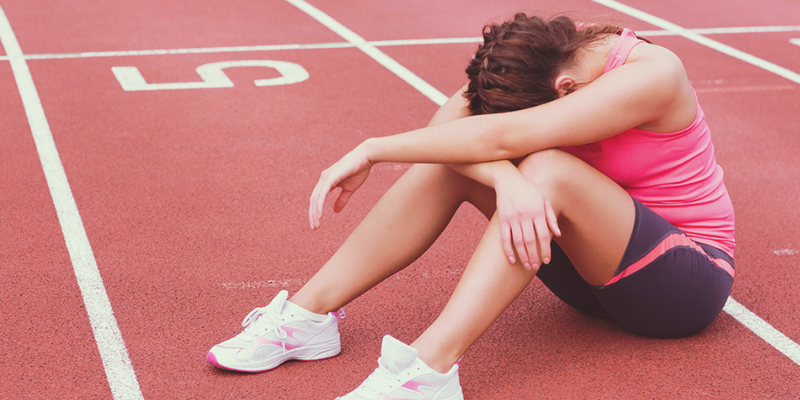Living in the 21st century, where we have devised the technology to monitor robots to do our bidding, there’s still one aspect where we fall grossly short when it comes to progress —gender equality. Rant as we might, the truth is that although the world may have moved three inches forward since the time of the World Wars, in some ways society has remained rooted to the spot because the very idea that a woman can equal a man is an abomination to many.
 Image : shutterstock
Image : shutterstock
Women are made to face the barrels of buoyant sexism on a daily basis, be it at work or even at home. We are monitored and judged by the way we dress, by the way we speak, by the number of cuss words we know, or even by the number of beers we consume at a social event. Although women are now endorsing and demanding their social rights — in both their virtual and physical realities — the truth is that even till this day, women do not receive as much respect or recognition on the professional front as their smug male counterparts.
This is especially the case when it comes to the sports industry. For too long, it has been dominated and reserved for men, their justification being that ‘women aren’t really into sports that much anyway’. I remember attending a sports writing class when I was studying journalism, which incidentally on just that one day, saw a greater show of hands on the male side. What astounded me was the immediate ‘obviously’ that rang through the class, the minute the lecturer observed this out loud. When even my closest friends caught my indignant glare, they shrugged and dropped the usual ‘everyone knows girls don’t get sports’ one-liner, that consequently sparked off the greatest boys vs. girls debate to be held in that freezing corner of the campus.
Why is this such a no-brainer for men? Why does ‘sports’ invariably become synonymous with ‘male’? Why aren’t we raving about the women’s hockey team instead of star-marking Virat Kohli’s fitness regimes on our computers? Why isn’t mainstream media covering even a fourth of female-centric sports on their pages?
As an observer, it is easy to take in the surface value of this reality, rant, and forget. But for the women who have to bear this on an everyday basis, it’s not a simple case of accept, forgive, and forget. They are embroiled in the eternal fight for their spot in the industry, one that is their natural right and none of it comes close to being easy.
- The first challenge that female athletes have to face is being paid half or less of what is given to their male counterparts. Be it whichever sport, there are gross discrepancies between the incomes of male and female athletes. This is the case even with prize money. Let’s take football, for instance. The prize money for the winners of the FIFA World Cup (male) would be roughly between $35–50 million (link to this article is here), while the prize money for the winners of the Women’s FIFA World Cup was roughly about $2 million (link to this article ishere). You don’t have to be a stellar mathematician to understand that even taking the minimum levels, the men’s team receives about $33 million more than the women’s team. Seriously, where is the justice in that?
- The second is representation. We know the biographies of the members of the Indian cricket team by rote. We know their family members like they’re our own, we follow all the gossip columns being written about them, and we know how many runs they made or how many wickets they took in every important match. But what about their female counterparts? Forget about knowing their names, do we even know when they play a match? Why don’t they have an IPL to their name? Instead of dealing with these pertinent issues, society tries to publicly shame these aspiring athletes. One incident that reached the media was the humiliation meted out to Dutee Chand, who was to be the first Indian woman in 36 years to run a 100m at the Rio Olympics. Last summer, acting on an anonymous tip, sporting authorities duped her into getting tested for hyperandrogenism, wherein a woman’s body produces more testosterone than is acceptable under the International Association of Athletics Federations (IAAF) guidelines. Not only was she banned from competing against other women in the Commonwealth Games, the world was suddenly questioning her gender identity. Her personal life became a sham and her professional life was a mess. However, Dutee refused to cower down and refusing therapy, has challenged the IAAF regulations at the Court of Arbitration for Sport in Switzerland.
- Female athletes are objectified on the field, much as they are on the streets. From coaches, to commentators, to the audience, women are looked at as commodities showcasing themselves for men’s pleasure, not as entities of potential and talent. This level of sexism can come from even the highest of places and the most famous names. For instance, in 2004, Sepp Blatter suggested that women should play football in more ‘feminine clothing’ to add an ‘aesthetic value’ to the sport. He has said, “Let the women play in more feminine clothes like they do in volleyball. They could, for example, have tighter shorts.” Numerous successful female athletes have complained about being scrutinised by the crowds, the minute they ride the limelight to recognition. Jwala Gutta, an international badminton player and 14-time winner of the National Badminton Championships has spoken about being stuck at this juncture of ‘looks vs sport’ on several public platforms, where she states that her professional success has often been based on the ‘way she looks’ on and off the field.
“I love fashion and I don’t step out dressed shabbily. But why is that a basis for accusing me of not being focused on my game? I can’t train 24×7, can I?” said Gutta, in an interview with ‘Open’. She speaks about how fans and critics alike have categorically called her ‘the hottest pin-up girl in sport’ and have ridiculed her ‘extended adolescence’ on social media. To the many objectifying statements hurled her way, Gutta just has one thing to say — “At some point, you have to stop caring about what is said about you.”
- Other than the fact that the chances of a stable income seem bleak for a female athlete in India, there is also the worrying question of job security. With the little funding that the teams and clubs receive for their training and gear, female athletes sometimes are pressed to work another job for additional income. As a result, they can’t give a 100 percent to their training and sport and more often than not, this forces them to drop out of the race altogether.
“Every day in a female athlete’s life is a hurdle race of sorts, especially if she hails from a village,” says Ashwini Akkunji, deemed India’s golden girl after her 400m hurdles win at the 2010 Asian Games in Guangzhou, China. “We live in hostels for years and we cannot hope to make friends or marry outside the world of sport.”
I have highlighted just a few of the many challenges that female athletes in the sports industry have to face on a daily basis, which as a third person I may not have been able to do justice to. Without being in their running shoes, we’ll never understand what it’s really like to survive and win, out there on the field. Despite all of these challenges, women are rising and making some serious history with their determination to reach the finish line. It is naïve to believe that this conditioning and situation can be changed overnight, but I do hope that this gets enough people thinking and maybe, just maybe, they’ll be the pro-changers we’ve been looking for, for a long time now.
[Source:- Your Story]






